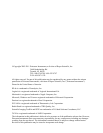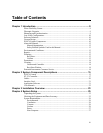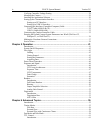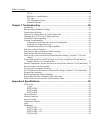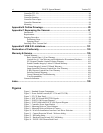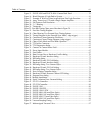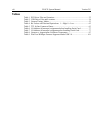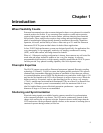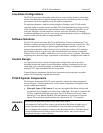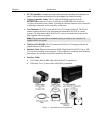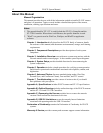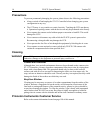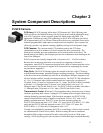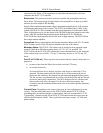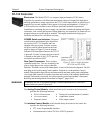
10 PI-SCX System Manual Version 2.E
10
Low-Noise Configurations
The PI-SCX system provides either a forced-air or water-cooling option to reduce dark
current. The thermoelectric (Peltier) design and precision electronics provide very high
precision as well as the capability to set the required temperature.
For higher performance, models with the phosphor, fiberoptic, and CCD all entirely
contained within a vacuum are also available. This configuration allows deeper cooling
while eliminating condensation on the phosphor surface. Another configuration, one in
which the fiberoptic extends outside the vacuum, allows the flexibility of changing
scintillators/phosphors for specific x-ray energy without breaking vacuum or coupling the
camera system to streak tubes or image intensifiers.
Software Solutions
The PI-SCX camera runs under WinView and WinSpec, Princeton Instruments' 32-bit
Windows
®
software packages designed for imaging and spectroscopy, respectively. They
provide comprehensive image or spectra capture and display functions, so you can
perform data acquisition without having to rely on third-party software. The packages
also facilitate snap-ins to permit easy user customization of any function or sequence.
Windows DLLs are available, which allows you to write your own software. This makes
integrating the system into larger experiments or instruments a straightforward endeavor.
Custom Design
On a special-order basis, custom fiberoptic-taper configurations can be provided,
including designs that support electron backscatter imaging, simultaneous wide- and
small-angle x-ray scattering imaging, or nondestructive testing. Configurations with
multiple CCD / taper assemblies can also be provided.
Contact Princeton Instruments for the latest information concerning these and other
options for fiberoptically-coupled camera needs.
PI-SCX System Components
The Princeton Instruments PI-SCX system normally contains the major components
shown in Figure 1 and described below. Actual system components will depend on the
system configuration ordered.
Fiberoptic Taper CCD Camera: X-rays pass through the Beryllium window and
are absorbed by a phosphor screen that emits visible light. This light is coupled to the
CCD by a reducing fused fiber optic taper. The CCD detects one or more visible
photons per X-ray photon absorbed. Detected photons are converted to electrical
signals. These are then transferred from the camera to the ST-133 Controller.
Do not touch the Beryllium window at the front of the camera.
Avoid abrasion of the Beryllium window since powdered Beryllium is highly toxic if
ingested. Beryllium should never be handled in a way that places personnel at risk.
Units are shipped with a protective label over the Beryllium window. This label should
be removed and discarded. Damage to the Beryllium window may result in loss of
vacuum and improper camera operation.
WARNING!



